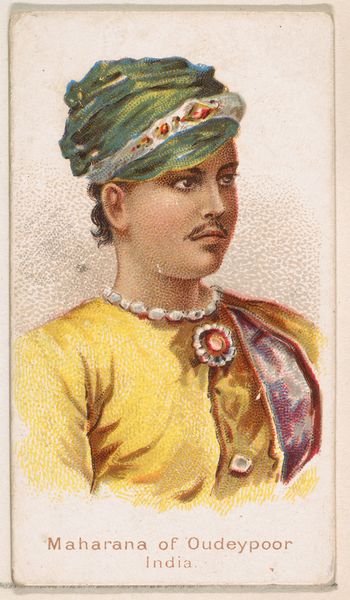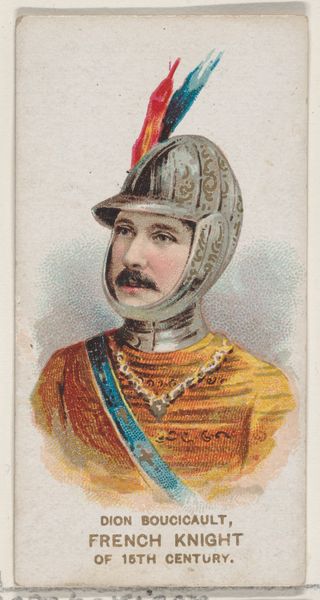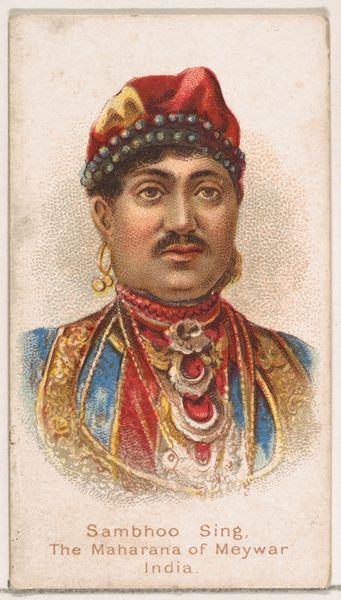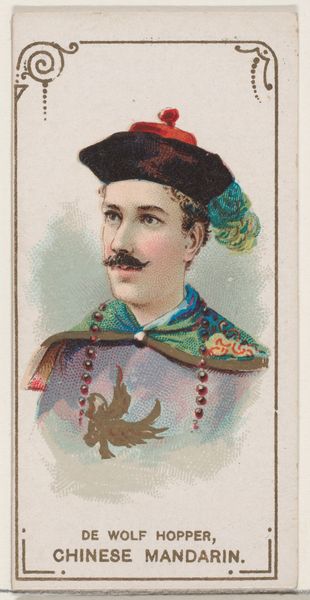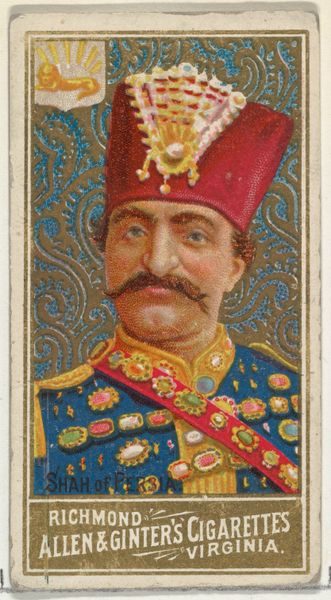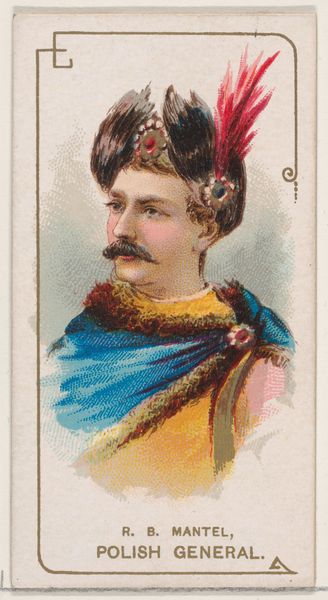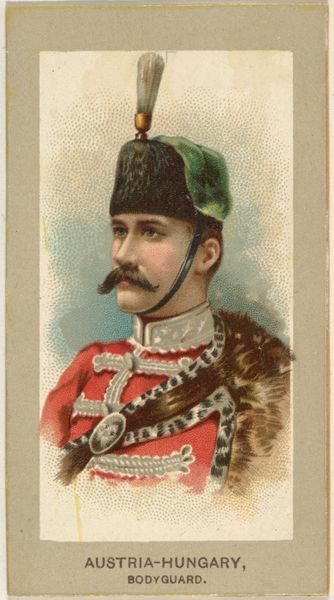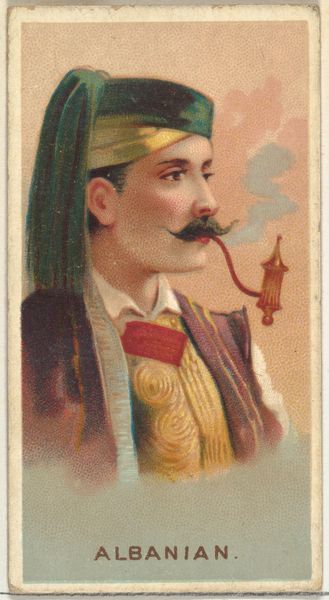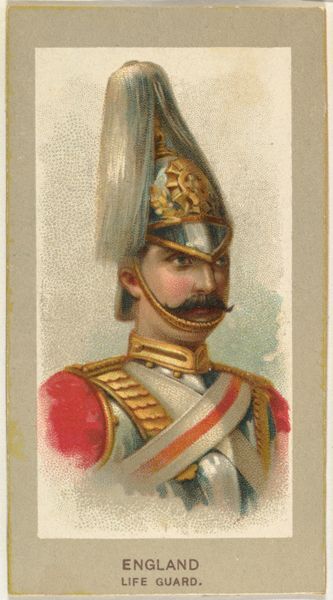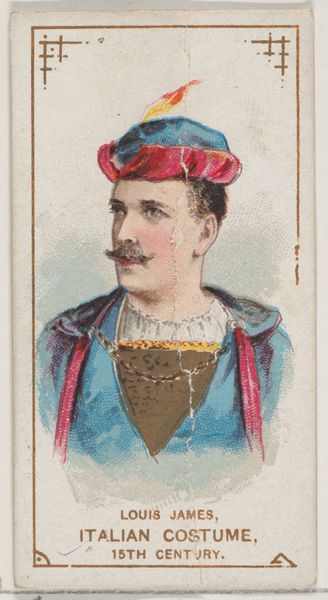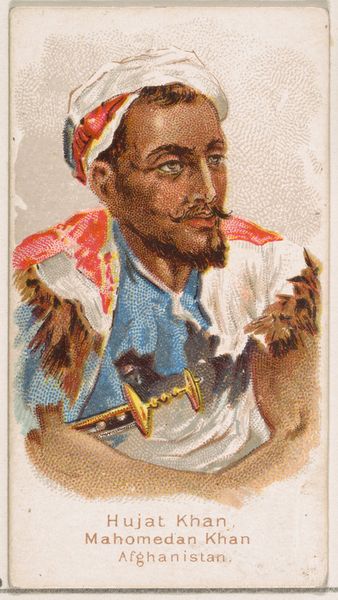
Rajah of Punnah, India, from the Savage and Semi-Barbarous Chiefs and Rulers series (N189) issued by Wm. S. Kimball & Co. 1888
0:00
0:00
graphic-art, print
#
portrait
#
graphic-art
# print
Dimensions: Sheet: 2 11/16 × 1 1/2 in. (6.8 × 3.8 cm)
Copyright: Public Domain
This small card, produced by Wm. S. Kimball & Co., depicts the Rajah of Punnah, India, adorned with symbols of authority. Note the beaded necklace, the elaborate golden shoulder decorations, and especially the ornamented headwear—all signifiers of status and power. Such emblems echo across cultures and epochs. Consider the laurel wreaths of Roman emperors or the feathered headdresses of Aztec rulers. These are visual assertions of dominance and divine favor, intended to inspire awe and obedience. The crown, in particular, carries immense weight. From ancient Egyptian pharaohs to European monarchs, headwear symbolizes supreme authority. In some contexts, it represents a divine mandate, a connection to the sacred realm. In this image, we witness how the cultural memory of power is manifested through recognizable symbols, adapted and reinterpreted across civilizations. The Rajah, through his regalia, engages in a timeless dance of visual assertion, tapping into our collective understanding of what it means to rule.
Comments
No comments
Be the first to comment and join the conversation on the ultimate creative platform.
